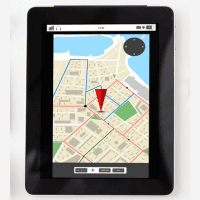As we navigate contemporary learning and development, mobile learning (mLearning) emerges as indispensable when planning learning. Let’s take a look at some nuances of mLearning, its inherent benefits, and provide ideas to optimize its vast potential.
Understanding mLearning

Mobile Learning is a paradigm shift in learning, facilitated on small, portable electronic devices. It’s not just about portability but about integrating learning seamlessly into daily routines. By using these devices, learners can tap into a wealth of knowledge anytime, anywhere, ensuring that moments of curiosity aren’t stifled by lack of resources. It epitomizes flexibility and reflects a modern approach to education that recognizes the diverse lifestyles and commitments of today’s learners.
Advantages of mLearning
Accessibility
The standout advantage of mLearning is its unparalleled accessibility. It breaks the chains that bind learners to specific locations or times. Whether during a morning commute, a midday break, or late-night reflection, learning continues unhindered. This freedom not only levels the learning playing field but also transforms spontaneous learning from a task into habit.
Concise Modules
mLearning’s modular approach is its strength. Content is not just fragmented but thoughtfully curated into bite-sized pieces, increasing retention. This micro-format not only suits the sporadic nature of mobile usage but also allows for easy repetition, enabling learners to reinforce concepts as and when needed.
Interactive Experiences
mLearning goes beyond traditional reading to foster a holistic learning environment. Through multimedia elements such as infographics, animations, and videos, it creates a combination of experiences. This multifaceted approach addresses different learning styles, ensuring that the content resonates with varied audiences and enhances their engagement manifold.

Guidelines for Effective mLearning Design
Curating an impactful mLearning experience requires a thoughtful approach using these best practices:
Brevity is Key
The nature of mobile learning leans towards short, focused bursts of content. Lessons should be focused, lasting 5-10 minutes, to suit the mobile user’s pattern – quick engagement in between tasks or during short breaks. This approach respects the learner’s time while ensuring the content remains impactful.
Visual Design
Beyond aesthetics, the visual design serves as the roadmap for mLearning. Clear graphics, coherent color schemes, and thoughtful layouts foster a sense of familiarity and ease. A consistent design language not only enhances user experience but also reduces distractions, allowing the learner to immerse fully in the content.

Ease of Navigation
The user journey within an mLearning platform should be well-planned – seamless and intuitive. Right-sized touch targets, clear transitions, and intuitive flow are essential. When learners navigate effortlessly, they can fully focus their attention on the content.
Incorporation of Multimedia
Diverse content delivery, leveraging videos, simulations, or interactive scenarios, can be instrumental in clarifying complex ideas. Multimedia not only breaks the monotony but, more importantly, provides varied perspectives on a topic, catering to diverse learner needs and preferences.
Assessments and Feedback
Regular check-ins in the form of quizzes, polls, or short tests can be valuable in assessing knowledge assimilation. Beyond mere evaluation, they offer a dual benefit: reinforcing content and providing diagnostic insights. Constructive feedback, post-assessment, bridges knowledge gaps and charts a path for learner improvement.
Mobile learning, with its adaptability and forward-thinking approach, addresses the dynamic demands of modern learning and development. As we progressively blend the digital realm with our daily lives, mLearning guides us towards a more informed, flexible, and learner-centric future. Embracing and mastering the facets of mLearning is not just an opportunity, it’s imperative in this digitized age.

